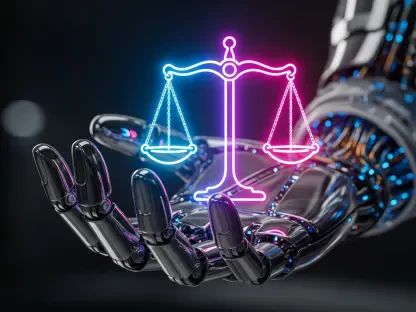The legal industry has witnessed significant transformations in how documents are reviewed, driven primarily by technological advancements transitioning from paper-based processes to advanced AI-driven solutions. Such progress has streamlined document management and fundamentally reshaped legal practices, underlining the profound importance of this topic.
Timeline of Key Events in Legal Document Review
1960s – The Rise of Photocopying
In the 1960s, the introduction of photocopying machines marked a major breakthrough in evidence reproduction within legal settings. This technological advancement drastically reduced the dependence on manual copying, thereby altering document management practices significantly. By enabling quick and efficient duplication of documents, photocopying set a precedent for future innovations in legal technology.
1980s – Advent of Computerized Legal Databases
The 1980s brought the emergence of computerized legal databases, transforming research methodologies in the legal field. These databases improved access to information, allowing legal professionals to retrieve pertinent data swiftly, which began laying the foundation for all subsequent digital innovations. This period marked a shift from traditional book-based research, enhancing both the speed and effectiveness of legal research processes.
1990s – Transition to Digital Documents
The widespread adoption of personal computers in the 1990s prompted a shift toward digital documentation within law firms. This transition allowed for enhanced storage efficiency as documents were increasingly digitized. By establishing a digital infrastructure, the legal industry prepared itself for the integration of future technological innovations that further broadened the digital ecosystem in legal practice.
2000s – E-Discovery Emerges
The early 2000s saw the emergence of e-discovery technologies, revolutionizing how legal documents were gathered and reviewed in litigation contexts. With the ability to systematically collect and analyze electronic documents, legal professionals redefined their litigation strategies. This transformation underscored the growing importance of digital data in legal cases, aligning legal processes more closely with technological advancements.
2010s – AI and Machine Learning in Legal Review
The 2010s introduced AI and machine learning tools into the realm of legal document review. These technologies facilitated automated tagging and analysis of documents, drastically reducing the time and costs traditionally associated with large-scale review projects. With these tools, legal professionals were able to handle extensive volumes of documents more efficiently, driving productivity and operational effectiveness.
2020s – The Emergence of Generative AI
In the 2020s, generative AI advanced even further, representing a critical evolution in legal document creation and review. This technology holds the potential to transform how legal professionals conceive and manage cases, introducing a new level of innovation and efficiency. Such tools promise to reshape the landscape of legal practice, offering unprecedented capabilities in document analysis and management.
Conclusion
The journey from paper to AI in legal document review marked numerous milestones that reshaped the legal industry. Each key development—from photocopying to generative AI—significantly advanced operational efficiency and precision. As the legal sector progresses, future considerations could involve ethically integrating AI while addressing data privacy concerns. Regional adoption of AI, driven by local regulations, continues to influence industry dynamics, while legal experts predict emerging innovations like explainable AI to further enhance transparency. Embracing these advancements ethically could yield a resilient and innovative future for legal practices.









